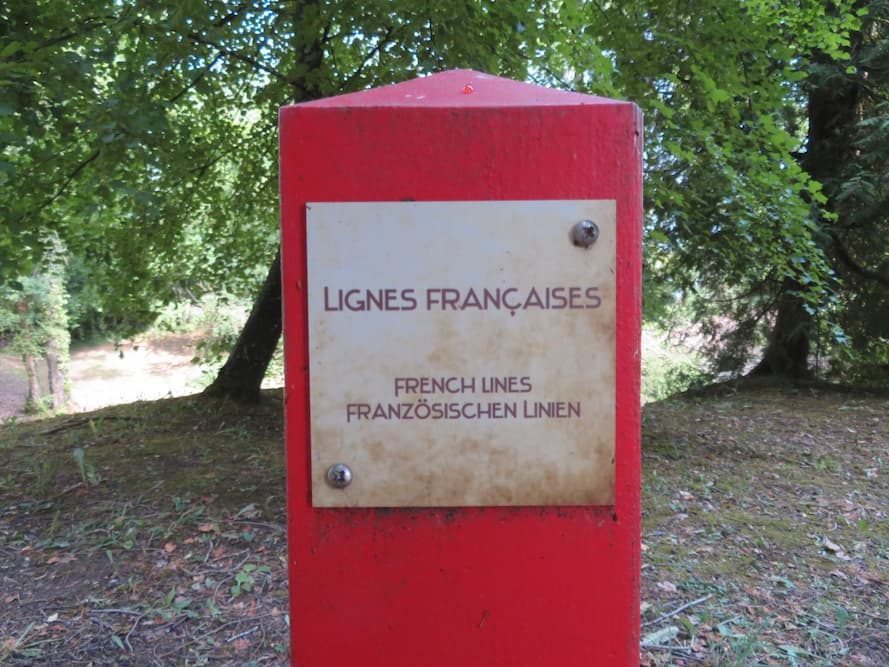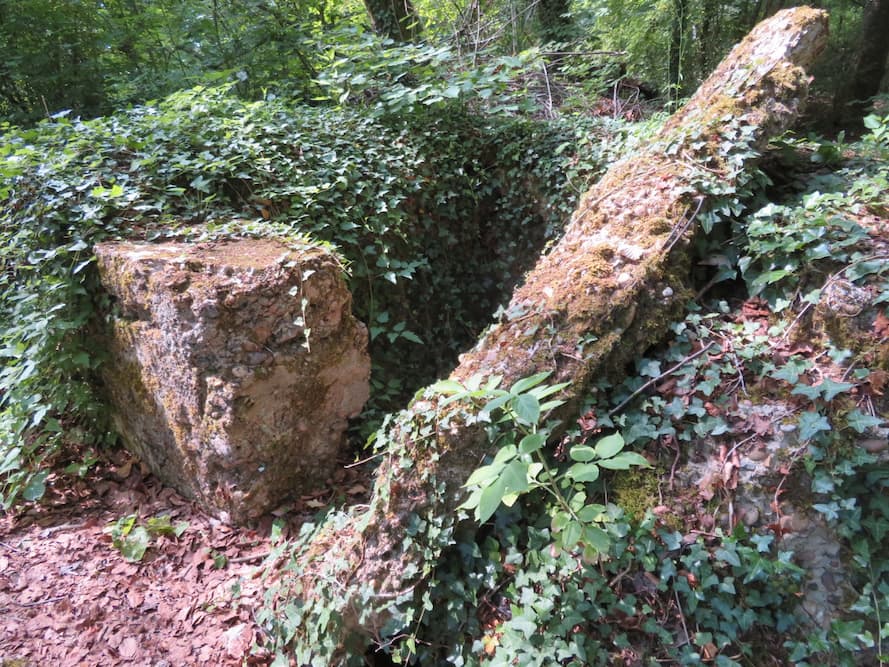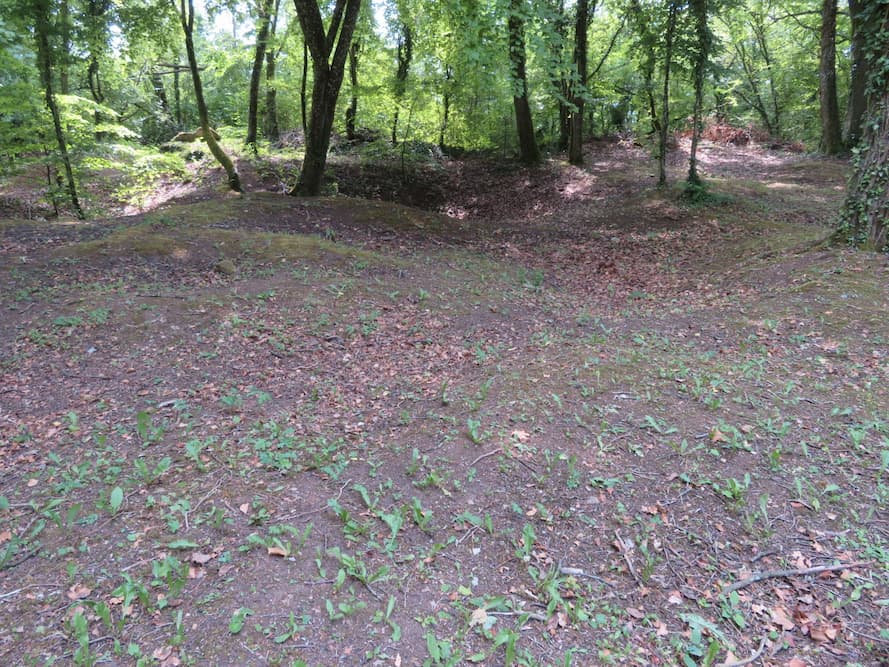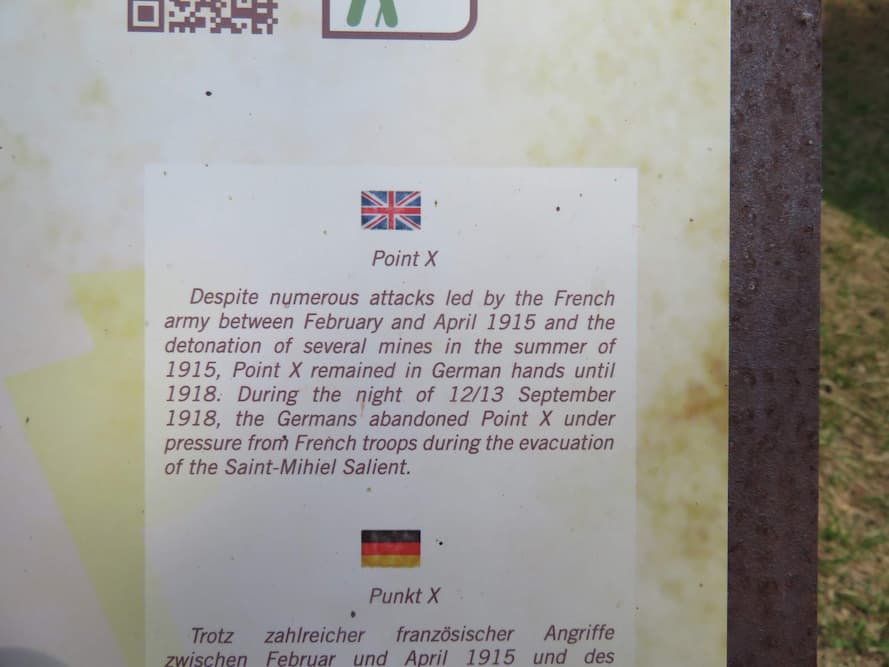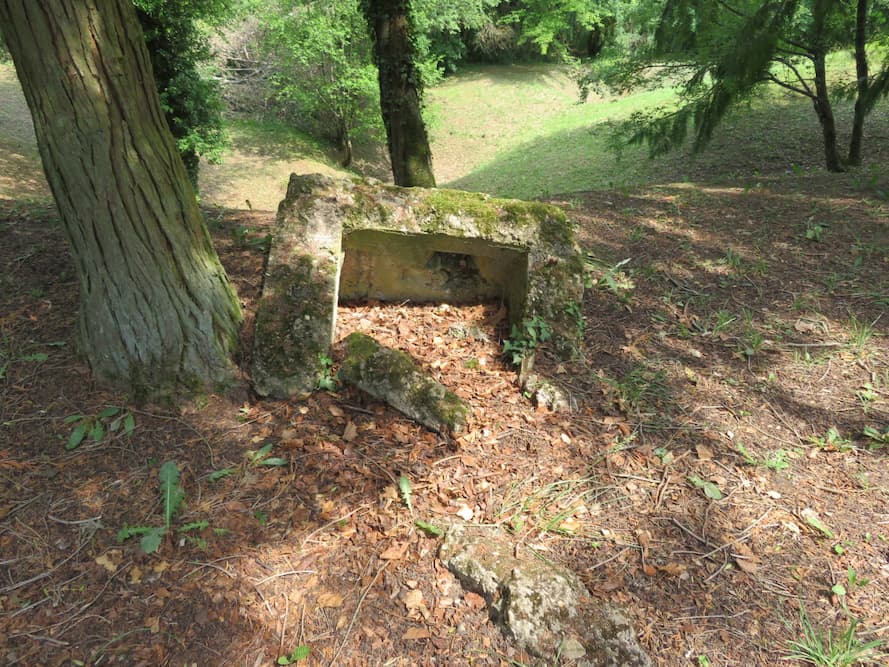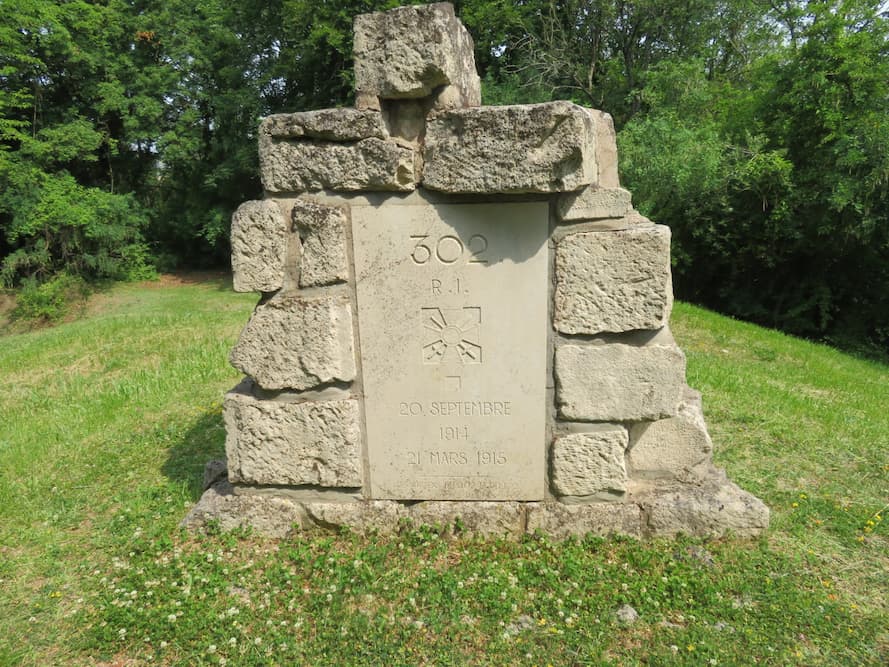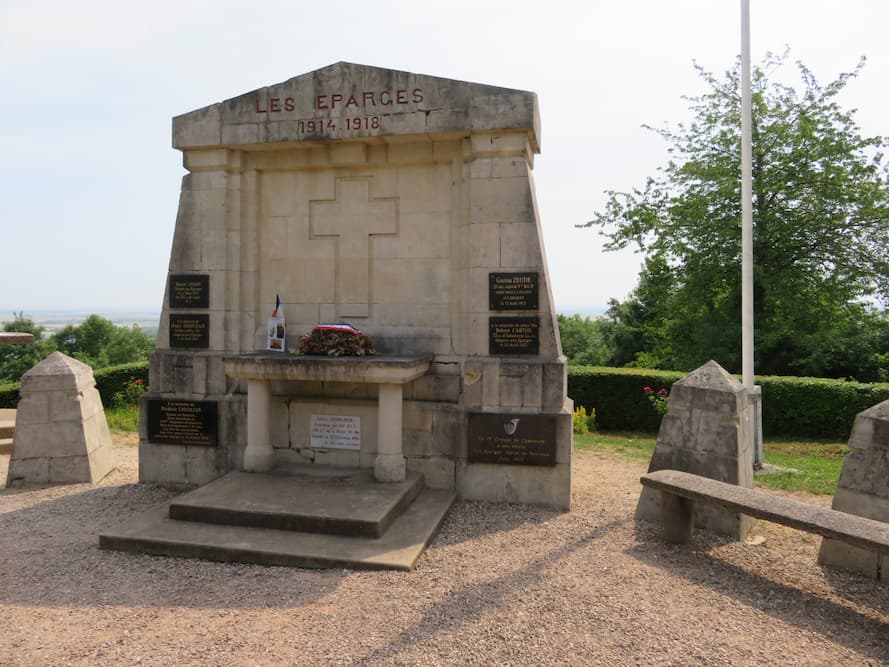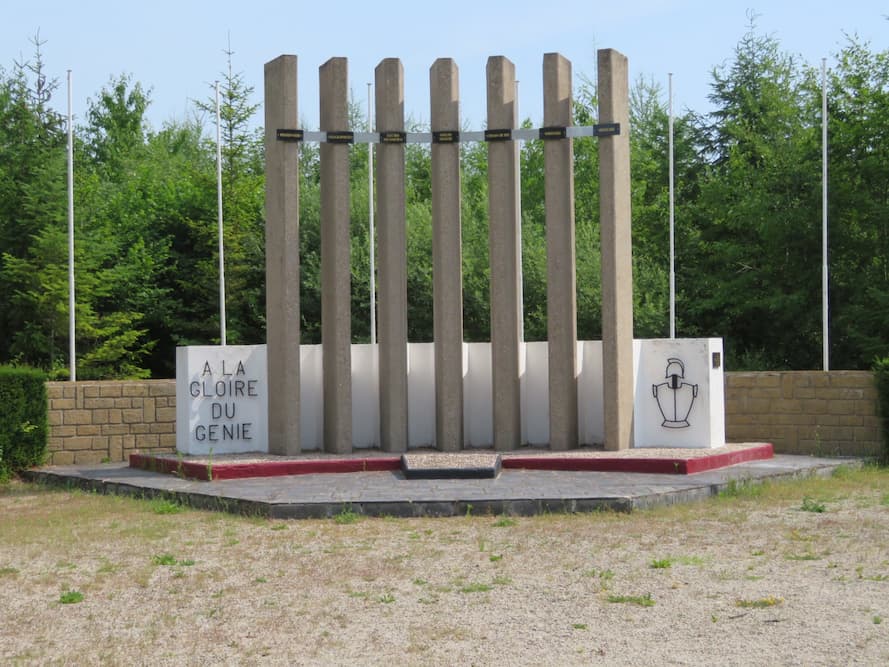Ridge of Les Éparges Point X
This ridge saw heavy fighting during the First World War. There are still many trenches, bunkers and other traces here. The ridge is well known for the mine battle that took place here.
Control of Les Eparges in combination with possession of Vauquois would even allow the Germans to cut off the bulge that Verdun formed in the front line. If it were possible to get hold of the line between Vauquois and Les Eparges and to keep it, the encirclement of the Verdun region would be a fact! From 1914, the possession of the hills of Les Eparges and Vauquois would be fiercely fought over.
As early as September 21, 1914, Les Eparges was occupied by German troops who quickly built up fortifications. The hill was cut from top to bottom by lines of trenches, and machine guns kept the area under fire from fortifications. The hill soon turned into a fortress. The French soldiers were five hundred meters away. The village of Les Eparges and the hill about 250 meters high north of the hill of Eparges was their terrain.
Until February 1915 there were relatively few combat actions between the Germans and the French, from that date the French would go on the attack almost daily, initially without much success. French 'sapeurs' (engineers) were busy placing heavy mines under the German lines through underground passages. Only when a large part of the western German first line went up in the air on 17 February with a huge bang did the French succeed in retaking part of the hill.
For days the Germans tried in vain and at the cost of enormous own and French losses to regain control of the bridgehead. A series of huge explosions, caused by mines of 20 to 30 tons of explosives, was the beginning of a further French offensive.
The booms were sometimes so enormous that in addition to the target, the German lines, French soldiers also regularly flew into the air. Craters were struck with a depth of up to fifty meters.
It would be the end of the first week in April before the French could reclaim all of the west side of the hill as their own.
The French and Germans would attack and counterattack for the rest of the war. The Germans also became increasingly skilled in so-called mine warfare. Whole pieces of hill were blown up in this way. Many fighters were never found again, they flew into the air or were buried alive under the ground that was released after an explosion.
The French and German men did not have a moment's rest because the positions were constantly under artillery fire. During hand-to-hand combat, when their guns ran out of ammunition, the soldiers continued to fight with knives and spades. Quiet periods in the battle sometimes led to panic attacks. The question then arose whether the opponent was perhaps busy undermining the position where one was staying.
They listened and listened… The battle for the hill of Les Eparges continued until September 1918 when American troops were involved in driving out the Germans for good. The village of Les Eparges was completely destroyed after the war.
Do you have more information about this location? Inform us!
Source
- Text: Kaj Metz + TracesOfWar
- Photos: Adri Kramer
Nearby
Point of interest
- The Mine Craters of Les Éparges - Les Éparges
- Firstaid Post Combres-sous-les-Côtes - Combres-sous-les-Côtes
- Winchhouse Combres-sous-les-Côtes - Combres-sous-les-Côtes
Monument
- Memorial 12th Division Les Éparges - Les Éparges
- Memorial 302eme R.I. - Les Éparges
- Sappers Memorial Les Éparges - Les Éparges
Cemetery
- French War Cemetery Le Trottoir - Les Eparges
- French War Cemetery Saint-Remy-la-Calonne - Saint-Remy-la-Calonne
- French War Cemetery Trésauvaux - Trésauvaux
